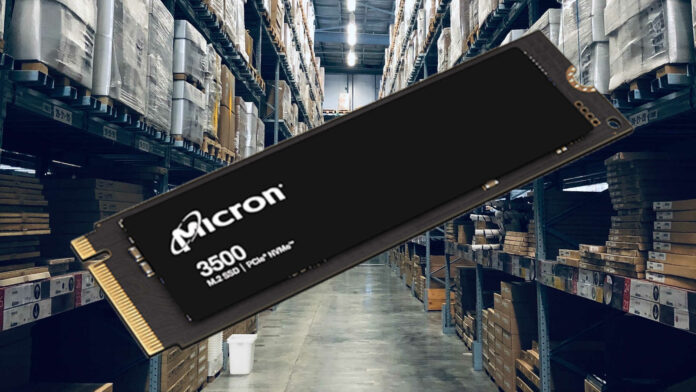Micron has announced its 3500 M.2 NVMe SSD lineup featuring high-density 3D TLC NAND and DRAM caching. This delivers improved performance without needing a heatsink, making it perfect for laptops and notebooks.
The 3500 series will be available in 512GB, 1TB, and 2TB capacities all reaching up to 7,000MB/s sequential read speed. Micron’s 6th generation 3D TLC NAND is responsible for the performance, supporting NVMe 2.0c and Direct Storage protocols via its PCIe 4.0 x4 interface.
Regarding the remaining specs, the smaller 512GB model tops at 5,100MB/s write, with 680K/700K read/write IOPS and 300TBW endurance. The 1TB pushes these figures noticeably to 6,900MB/s write alongside 1,050K/1,150K read/write IOPS and 600TBW. The 2TB variant only has a small improvement, with 7,000MB/s write, 1,150K read/write IOPS, and 1,200TBW NAND durability.
According to Anandtech, the 3500 NVMe SSDs are based on similar hardware to the Crucial T500 models. In other words, Micron’s 232-layer 3D TLC NAND plus a Phison E25 controller, operating at 2400MT/s in 4-channel mode with DRAM for caching. All while being backed by three years of warranty.
If this level of performance is not enough for your needs, check out the Crucial T700 series. This seems to use the same NAND flash while delivering much higher transfer speeds. On the more affordable side, there’s the Crucial P3 Plus that goes up to 4TB if capacity is your priority. Just note that the P3 Plus series uses QLC NAND.
While the Micron 3500 SSD series is now shipping to select PC OEMs, the brand didn’t indicate any pricing for DIY users. With this level of performance, we can expect pricing around £75 for 1TB and £140 for 2TB, assuming it is not an OEM exclusive.


